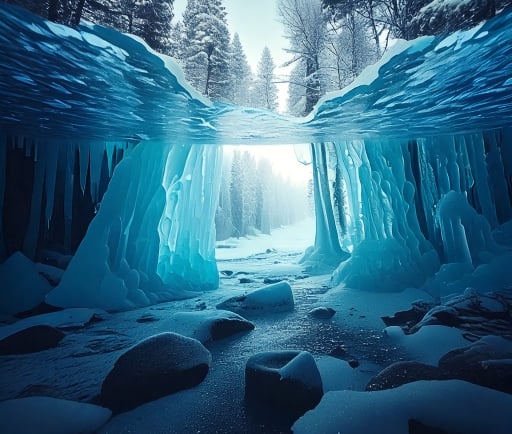Highland A: Beneath Antartica's Ice


The Enigma of Highland Valleys
In the heart of the Earth’s ancient landscapes lies a realm of beauty and mystery—the highland valleys. These valleys were shaped by prehistoric rivers, flowing fiercely through the terrains long before the onset of the ice ages. The remnants of this lost world can still be observed today, illustrating the powerful interplay of water and land. As we dive deeper into the phenomena of ice flows and melts, we begin to understand their significance in shaping our planet.
The Rivers that Carved Our Landscape
Prehistoric rivers served as the architects of valleys, etching out vast landscapes over millennia. They played an indispensable role in the hydrological cycle, with their waters nurturing diverse ecosystems. These rivers, abounding in life, were essential for sustaining prehistoric flora and fauna. Today, remnants of these ancient watercourses reveal vital insights into environmental changes and their implications for present-day climates. As the climate continues to fluctuate, understanding the dynamics of these rivers becomes crucial.
The Impact of Ice Flows and Melting
The phenomenon of ice flows and their subsequent melting is a critical concept to grasp, especially concerning global sea levels. The world's glaciers and ice sheets store an immense volume of freshwater, enough to induce a staggering rise in sea levels by 25 feet should they fully melt. This potential shift presents serious consequences for coastal communities worldwide. Ice flows that once advanced across our planet have begun retreating at alarming rates, influenced by rising global temperatures due to climate change.
As ice melts, it contributes to the increase in sea levels, altering coastlines and threatening ecosystems. Researchers are diligently studying these shifts to evaluate the effects on both human society and the natural world. Moreover, the extensive historical data from ancient highlands and river systems aids scientists in predicting future changes. This intersection of geography and climatology is not only fascinating but vital for ensuring our collective future on this planet.
Understanding these intricate relationships between our past geological phenomena and present climatic changes is essential. It encourages awareness of the delicate balance in which our ecosystem operates, allowing us to turn our attention toward sustainability and conservation efforts before it’s too late.
